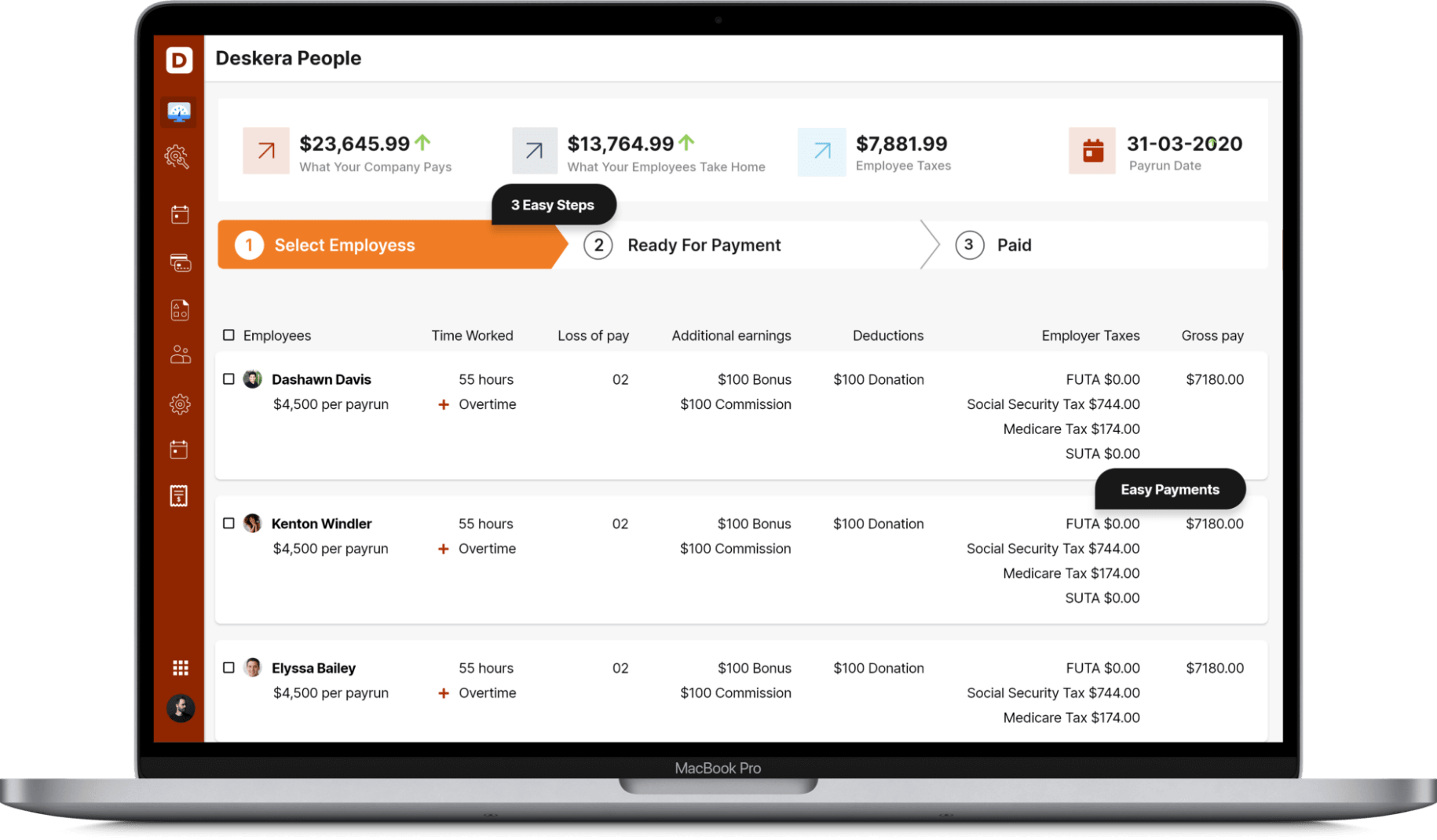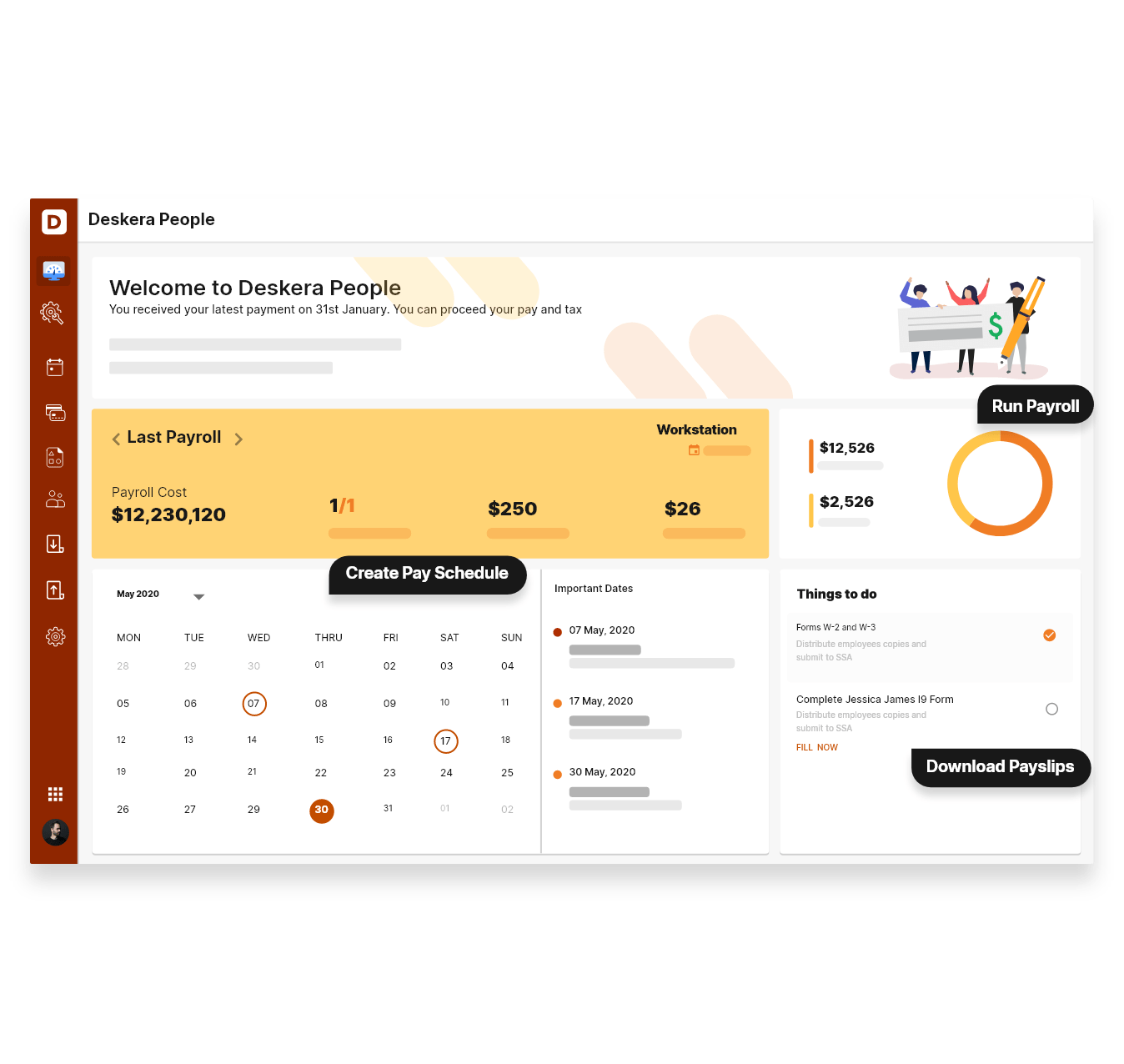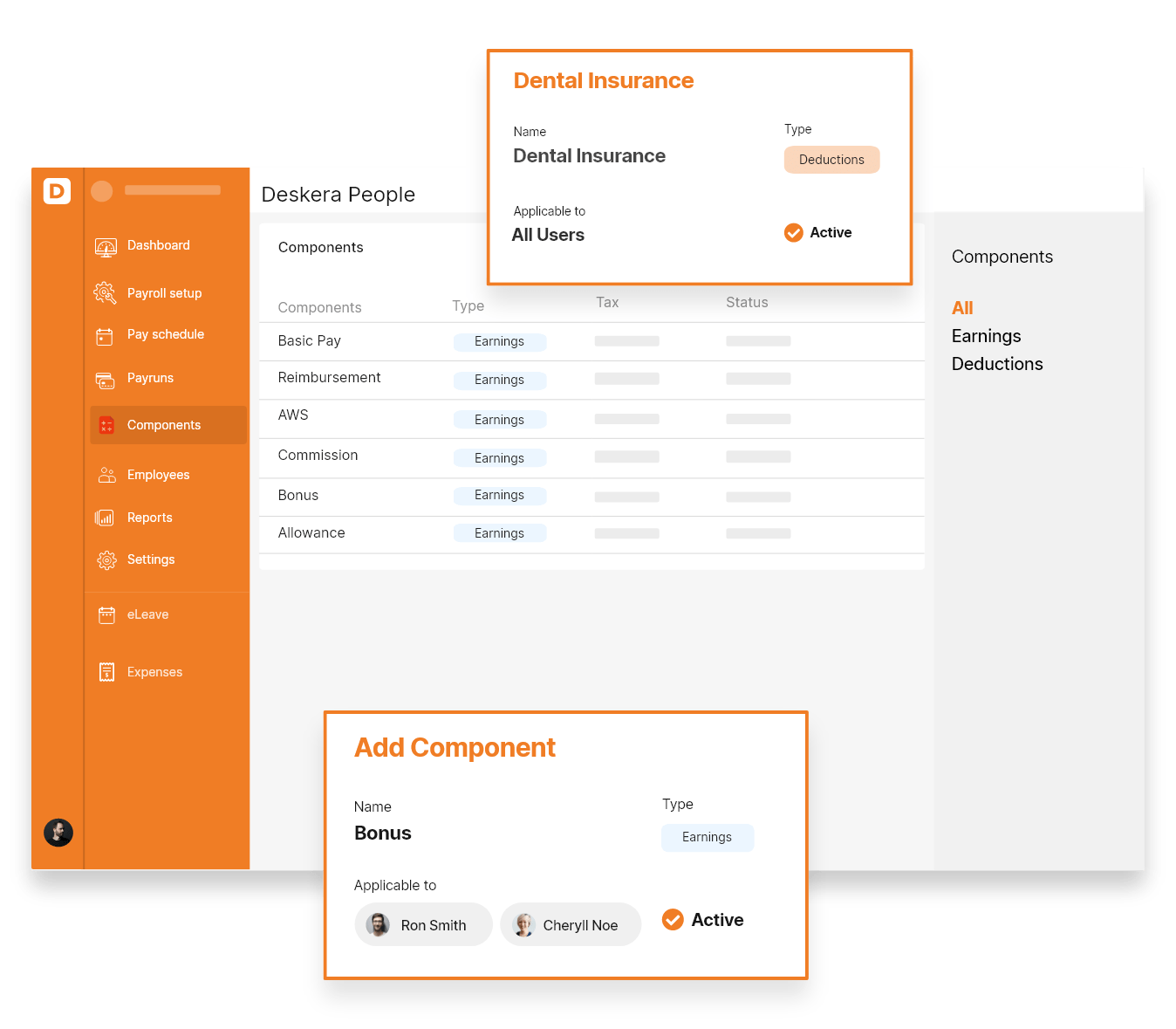Although the talent crunch has become more critical than ever, Human resource managers tend to face numerous challenges on a day-to-day basis, right from the recruitment process to the final selection of the right person.
After devoting endless hours in the hiring process, what is the next step to keep the new joinee intact towards your organization?

The answer to the question is Employee Onboarding. It refers to building relations with the candidate to increase employee engagement, involve a sense of loyalty among the new hires, and improve employee retention rate.
Because after all, imagine if your new hire ends up waiting for a better landscape, all your hard work goes down, and you will be back to level one.
In this article, we will be discussing employee onboarding and best practices to ensure stability in the organization, along with the following:
• What is Employee Onboarding
• The importance of Employee Onboarding Process
• 5 C's of new hire onboarding
• Onboarding checklist and constituents
• 10 Employee Onboarding best practices
• Closing thoughts
• Getting started with Deskera people
What is Employee Onboarding?
Employee onboarding refers to the process of inducting new employees into the organization and, in simple words, introducing new employees to the organization's environment and culture. It involves taking message steps to ensure that the new hires are welcomed into the new role and have a thorough understanding of its mission and vision statement.
The employee onboarding process involves a series of steps that depends from one organization to another. It also depends on the job offer, responsibilities, schedules, and resources required to complete the job.
The process is not a one and end process. Some organizations consider onboarding a one-day affair, while others take it up to 12-18 months.
The process in itself involves in-depth research and flow to empower new hires and motivate them from the start.
Importance of the Employee Onboarding Process
Suppose the organization plays an extra focus on the employee onboarding strategy. It will help the organization and support the new employees to be reminded about the opportunity they have to look forward to. It will also help them enhance their eagerness to work with them and highlight how the company will work to protect their well-being.
This two-way process will play a crucial role for employees as well as the company in several ways.
Following is a list of five reasons highlighting the importance of the employee onboarding process:
- Empowers new hires
- Encourages connections between the existing employees
- Set an impression among the new hires
- Helps to embrace company culture
- It helps reduce employee turnover
1. Empowers new hires
New employees are always full of energy. By focusing on the onboarding process, you can make the new hire feel comfortable and excite them about the future work. It will charge them to contribute to their full potential and achieve the goals given to them.
2. Encourages connections between the existing employees
The new hires will be looking up to the team and members with whom they will be working. By building connections with them, you can ensure that the new joinee feels comfortable around them and provide engagement and productivity to boost the role.
3. Set an impression among the new hires
The first impression is the last!
This is not only applicable to candidates but also to the organization with whom they will be working. The new hire should feel special about the day such that they end up taking loads of memories back home.
With this, you will be able to convey the organization's culture and make a forefront impression about your first impression.
4. Helps to embrace company culture
Every organization has its own culture, which is a factor where the candidates decide where they want to work. The company's culture is not just limited to the about us section mentioned on the website but also covers an overall outlook of the company.
The onboarding process should include embracing the company's culture, values, and responsibilities with your new hire.
5. It helps reduce employee turnover
Imagine the state where the employees tend to leave your organization. It's a fact that the estimated total cost of replacing an employee is between 30-150% of the salary.
After some time, if the new hire is not happy with the company, they won't stay with you for long.
So it's vital to ensure that you contribute to the well-being of our employees right from the beginning, ensure employee retention, and reduce employee turnover.
Remember,
"Onboarding is an art. Each new employee brings a potential to pave for. Never let that fade away."
The 5 C's of New Hire Onboarding
Following the importance of the employee onboarding process, there are the "5 C's of new hire onboarding" that an organization should consider and consider to make part of the new hire process.
The 5 C's includes the following:
- Compliance
- Culture
- Connection
- Clarification
- Check back
1. Compliance
Compliance means understanding the organizations or policies and procedures. It is generally known as a former orientation with human resources that includes safety regulations, POSH committees, confidentiality requirements, and departmental procedures.
2. Culture
Culture means exposing the new associates to the company's culture. It includes your organization's mission, vision, values, company history, background, working process, and how the communication process takes place. In short, everything that depicts the organization.
3. Connection
Connections mean encouraging new associates to establish interpersonal relations and build a network among the organization's people. It ensures that the new hires are aware of the team and subgroups they are associated with. Many organizations consider assigning a mentor or a guide for each associate that can help them navigate to the first few months of the job under their guidance.
4. Clarification
Clarification means focusing on clearing the new associate roles, responsibilities, and performance expectations. There are lots of questions that a new hire can have in their mind like
- What is their role in the organization?
- Who are working under them
- To whom they need to report for their activities
- What does your organization do, and how does it operate
- What are their individual goals
The onboarding process should cover all of these questions as such that it can help the new hires to speed up more quickly and proceed towards their job.
5. Check back
Check back refers to getting back to the new hires and formally checking them during the initial 30-90 days of onboarding. It is important to collect feedback on how they like the process and what all companies need to improve at their end.
Onboarding Checklist and Constituents
After the organization is done with the final selection process, preparing an onboarding checklist can help the managers and HR ensure that all the necessary steps are covered to guide the new employee.
The onboarding checklist and constituents can be divided into:
- Essentials during the onboarding process
- Checklist for day one
- Checklist for week one
- Checklist for month one
- Checklist after three months
- Checklist after six months
- Checklist after one year
Essentials during the onboarding process
> Submit a job requisition form to HR
>Complete a background check
>Review the schedule and clarify the job basics
>Review the job descriptions and duties
>Completion of new hire forms
>Preparing team introductions
>Preparing for new pieces of training
Checklist for day one
>Conducting job orientation with two years instructions
>Reviewing about the first schedule and working hours
>Knowing about the policy is like safety and security
>Explaining the compensation and benefits
>Provide an employee FAQ handbook
>Have to set an updated table or cabin and other equipment.
Checklist for week one
>Giving employees initial projects and assignment
>Reviewing the employees probationary period
>Evaluating employee performances
>Ensuring that the employee has met with their team members
>Invite employees to connect over different media platforms
Checklist for month one
>Continuing with the constant
>Ribbon work and projects
>Enjoy your time flies following the protocols and schedules with training
>Engage with the employee with regular meetings
>Ask for feedback from their fellow team members
Checklist after three months
>Scheduling a performance review
>Reviewing the overall past assignments and projects
>Setting up performances and future goals
>Asking for critical feedback
Checklist after six months
>Conducting an overall six-month performance review
>Asking feedback of the employee's goals and signs of progress
>Setting goals for future actions
>Checking of the completion of the training period
Checklist after one year
>Conducting an early performance review
>Recognise the first year by sharing a greeting card of celebrating the day
>About the future goals of actions projects
>Answer questions employees may have clearing out
>Discussing further compensation, increments, and raise policies.
Remember,
"Checklist shapes and sets the tone of the company and makes the process worth remembering"
10 Employee Onboarding best practices
Welcoming new employees into developing fruitful and long-term positive relationships with the organization can only be possible through effective onboarding.
Let's take a look at ten of the best practices for effective employee onboarding:
- Align the message at the beginning
- Planning out the first day
- Encouraging interactivity and involvement
- Welcome newbies with open arms
- Involve senior leaders in the process
- Support the person's authentic strengths
- Don't rush in one go
- Assign a mentor or buddy
- Focus on formal as well as social relationships
- Gather feedback and work upon it
1. Align the message in the beginning
The onboarding process is designing the goals first that align with the message in the beginning. If you create a well-designed structure and message of the onboarding process, the newcomers will positively impact your organization.
2. Planning out the first day
The first days are always special for the newcomers. The organization recommends planning efficiently and making the new hires feel comfortable around. You can also give a small tour of the organization and ensure that only less work or paperwork is provided to them, especially for the first day.
It will help them to make loads of memories and leave a lasting impression.
3. Encouraging interactivity and involvement
A newcomer should always be provided plenty of time to interact, network, build connections, and learn about the team members and surroundings.
Enhancing interactivity and involvement can help them build fruitful relations with their colleagues to communicate anything and everything.
4. Welcome newbies with open arms
A newbie feels welcomed when they feel that someone at the door will greet them for their first day. Many organizations consider offering welcome gifts like flowers, mugs, goodie bags, certificates, or welcoming gestures to ease the stress and make them feel special on the first day.
You can also organize games and prizes to break the ice of communication.
5. Involve senior leaders in the process
Interacting with your colleagues is essential, and so is with your leaders. Involving senior leaders in the process will give a positive perception among the new employee. They will feel comfortable around them and won't be hesitant to talk to their seniors.
6. Support the person's authentic strengths
If the new employee tries to showcase their strength in solving a problem or getting out of a situation, then encourage them. It will make them feel more responsible and develop a sense of belongingness towards the organization. They will think that their presence is respected around.
7. Don't rush in one go
Since the employee is new to the organization, it is impossible to understand everything in one day. Please give them a proper time frame to evaluate and implement the surroundings. Depending on the employee and profile, some organizations take one day, some 15 days, or maybe months.
You can go slow!
8. Assign mentor or buddy
Many organizations have the practice of assigning a mentor or buddy to the new employees. The mentor or buddy helps to integrate the new joiners with the organization. They make the environment comfortable for the new joiners. As a result, new joiners can also ask questions and seek guidance from their assigned mentor.
9. Focus on formal as well as social relationships
The onboarding practices should be carried out in a formal way that can help the employees to socialize further. Rather than carrying out an old and boring presentation, the process should be interactive by focusing on building social relationships. This process helps to improve the onboarding experiences and increase the retention rate among the employees.
10. Gather feedback and work upon it
It is essential to ask the new employees how they felt about the onboarding process to increase the spirit of continuous improvement. What are the things that they liked the most, recommendations to improve further, and focus areas?
Gathering feedback will help your organization to plan the process accordingly, mark the progress and take care of the value of training in the future.
These practices are tried and tested by the HR manager. It helps to ensure the success of employees and aims to rope in them effectively within the organization.
Closing thoughts
As a concluding statement, the purpose of the employee onboarding process is evident. Employees are the roots of the organization. It is by default necessary to retain them for a long time. The organization must take concrete steps and follow best practices to create out-of-the-box ideas creatively, measure the impact of employee satisfaction, engage with them, and boost the employee onboarding process to scale heights.
"Employee onboarding process either makes or breaks the organization."
Getting Started with Deskera people
Deskera People has the tools to help you manage your payroll, leaves, employee onboarding process, and managing employee expenses, all in a single system. With features like flexible pay schedule, custom payroll components, detailed reports, customizable payslip, scan, and upload expense, creating new leave types, and more, it makes your work simple.
Deskera HRMS also known as Deskera people, is all in one; it has many functions that will come in handy. Some areas are common as other HRMS and some that you have probably never heard of but can do wonders for your company.
To start with, you have excellent payroll software that will ease out the payroll process of your company. And the best part of the Deskera HRMS is you can do it in just three steps. Simply add employees to the system, select the amount to be paid, and pay them off.
With Deskera People, you can generate payroll and payslips in minutes. Employees may access their pay stubs, request time off, and submit claims and expenses online.

Secondly, all you need to do is access one dashboard, and you have all your employee information aligned together. The People Dashboard depicts all the pertinent information like the cost of the previous pay run and estimates of the upcoming one.
It also illustrates the year-to-date cost in a graphical interface. The calendar embedded in the Dashboard helps you identify the upcoming pay run dates for you to take action.

With Deskera, you can also add and deduct salary components easily without much hassle. Simply set up employee bonuses, voluntary deductions, taxes, and so on.

Deskera also develops extensive reports on your payroll, taxations, and all you need to know about your company. As a result, you are always prepared for any inspections taking place or if you have to go through any specific information.

We have compiled resources and steps to quickly get your Deskera People Account up to and running in this brief Guide.
Key Takeaways
Selecting new employees for the organization is a long and tedious process. Every organization makes sure that they retain the new hires with them. But it can only be achieved by giving proper time, patience, and investment towards the employee onboarding process.
Following are the key takeaways of the article:
- Employee onboarding refers to a process of conducting new employees into the organization.
- The duration of the employee onboarding process depends upon the type of organization.
- The employee onboarding process is crucial for the organization in terms of empowering new hires, encouraging connections, setting an impression, helping to embrace the culture, and helping reduce employee turnover.
- There are 5 C's of new Hire onboarding that include Compliance, Culture, Connection, Clarification, and Check Back.
- The onboarding checklist helps the human resource managers take the necessary steps in guiding the new employee.
- The onboarding checklist and constituents can be divided into eight parts, i.e., the essentials checklist after day 1, week 1, month 1, 3 months, six months, and one year.
- There are general ten best practices for employee onboarding, from aligning the message to gathering feedback.
- The role of Deskera people in managing the process
Related Articles













